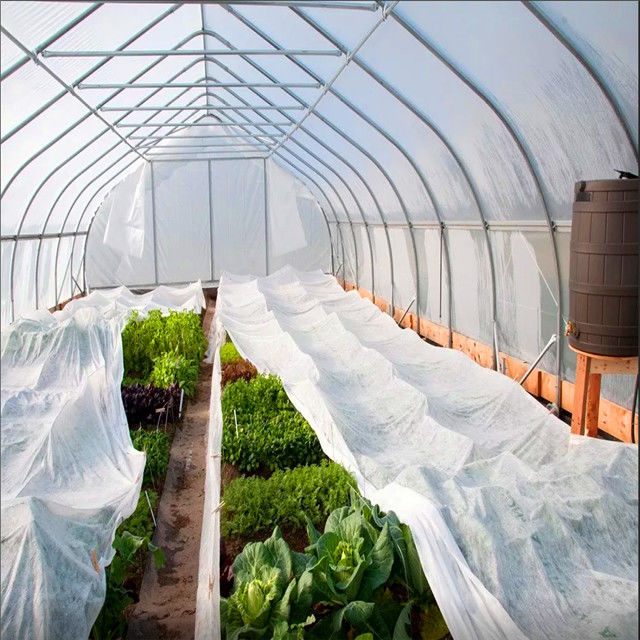
Non-woven Industry Development Non-woven fabric is a product that emerged out of the petrochemical industry following the invention of plastic cloth (film). It is lighter than plastic cloth and permits better ventilation. It is commonly employed in sanitary and medical items like sanitary napkins as well as facial towels, filters and more., and was later developed and applied in engineering. Non-woven fabrics protect vegetable crops from cold damage. The manufacturing process of non-woven fabric is different from plastic film, but the raw materials used are nearly the same. This includes PVC (polyvinyl chloride) PET (polyethylene), EVA [Ethylene Vinyl Acetate copolymer], PVA (polyvinyl alcohol) etc. Inflating traditional plastic film with the heat, it creates thin film. In essence, the film is continuous. The material extends indefinitely. The film's surface is devoid of pores. It is totally inert, and it blocks all exchange and movement of molecules. Chemical fibers made of synthetic materials, made of the listed raw materials became the hottest product in the industry of textiles. But, these fibers can still be made into cloth by traditional warp or weft weaving. Non-woven materials are produced by interspersing fibers on the same plane at different angles across all directions instead of traditional warp and weft techniques. Compared with traditional woven fabrics they have superior material properties, and its production process is able to go from the raw material to finished items in one go. The traditional process of weaving and drawing fibers is removed. Production costs are also lower. Non-woven textiles have been extensively used in the apparel industry in recent years. Since the last few years, thanks to advancements in material science as well as the advancement of production technologies Non-woven fabrics are becoming more diverse and utilized increasingly widely. Diverse materials and products can be seen everywhere in our daily lives. Due to their lightweight and easy production, non-woven textiles have been gaining popularity in farming. Look at this non woven landscape fabric for recommendations.

Non-woven textiles in agriculture: applications of non-woven fabrics in Agriculture. Non-woven fabric was first utilized in Europe to protect carrots from early harvesting. In addition, to deter whiteflies and tomato leaf virus, non-woven fabrics were first introduced in Europe to the agriculture industry in the year 1978. Non-woven textiles are used in the United States to mulch cantaloupes. Sweet peppers. tomatoes. Root vegetables. Carrots. Radishes. Cabbage. Lettuce. It is mostly employed to preserve heat, encourage early harvesting, as well as for pest control. Non-woven materials have the ability to raise soil temperature and also retain water which is why they are employed to make grass-proof mats. Short fibers are also utilized to make water absorbent blankets, which are applied on nursery beds in order that the roots are able to fully absorb any water. They are also used as the ground medium used in the production of turf. They can be used as planting bags to protect large woody plants, such as fruit trees or garden trees, and to hold in water. Non-woven fabrics are widely used in Taiwan as crop covers. Non-woven fabrics are used extensively in greenhouses of large size for energy conservation as well as environmental control. Canopy curtains, double-layered covers and canopy curtains to reduce heat and radiation loss during the night. High-density spunbonded non-woven TAVIK fabrics were utilized in the beginning to shade and protect cauliflower bulbs. They quickly adopted it by farmers because of its thermal conductivity that was low as well as shading capability. Later, it was slowly utilized for heat preservation as well as insect-proof cultivation of leaf vegetables. It also was used as a shade and heat preservation and cultivation tool for pineapples and fruit trees. Due to Taiwan's unique climate and climate, non-woven sector growth is slow. The manufacturers of Taiwan's nonwoven fabrics are constantly innovating in nonwoven technology. This includes air permeability, absorption of water, as well as water repellency. It has increased its research in order to enhance its capability to store and preserve agricultural products, and hopes it will be able to develop additional applications. Follow this pp agricultural nonwoven fabric for more info.
